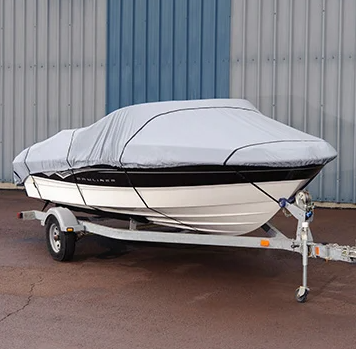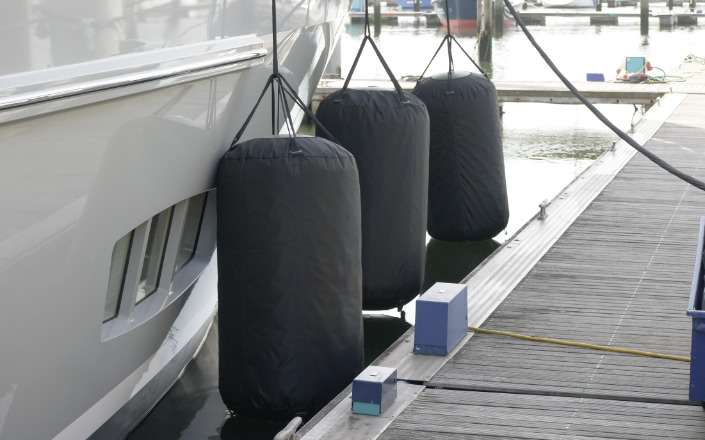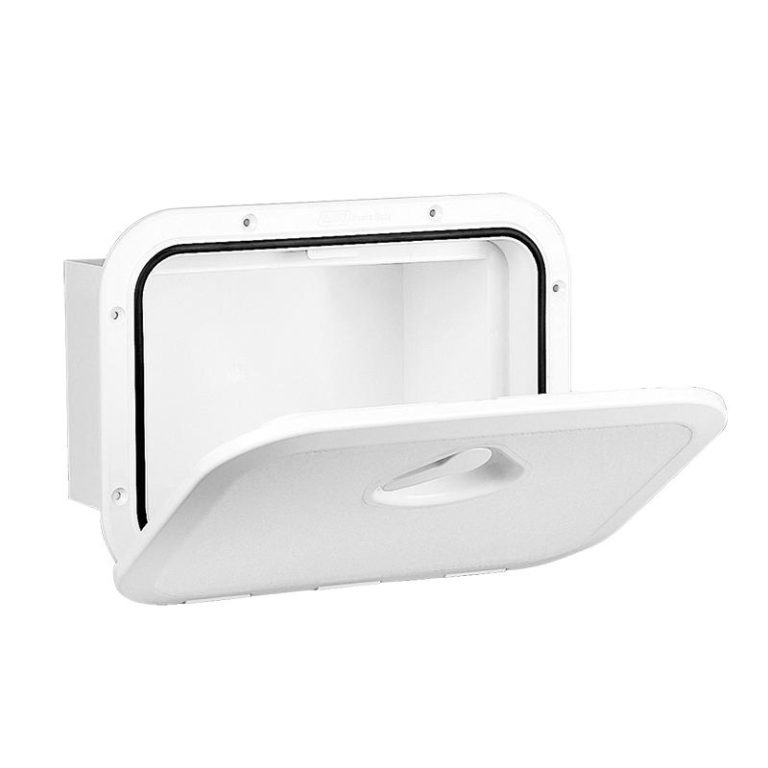Last Updated on September 26, 2022 by Brian Drew
When the winters are near, your boat would demand a winterizing routine. Having an efficient winterizing routine will prep your boat and help it withstand even the harshest winter. However, covering your boat for weather such as rain requires a different routine.
You can do away with a normal tarp and cover your boat. This would keep it safe from theft and external weather elements. But if you are considering the options to cover your boat during the winter, there are certain prerequisites.
Before we see the step-by-step process to cover your boat, here’s an insight into the other steps you may need for the winter preparation of your boat.
Preparing your boat for winter hibernation:
Some boats come with specific winterizing recommendations, do you have any? Begin with cleaning your boat. Remove all detachable parts like these and other paraphernalia that you usually leave on your boat. The engine body would require a coat of anti-corrosion spray. Check and prepare inboard and outboard engines.
Depending on whether you store your boat on the water or on the land, come up with a complete checklist for winter preparation. This is the first step before you cover your boat.
This is the case where you are covering your boat for a longer period due to the harsh winters. This would make sure that the boat and its parts remain guarded against snow and chilly winds.
Given that your boat has been winterized, do you still need to cover your boat? Do you have to cover your boat only during the winter? Here are some reasons why covering your boat from the external elements is really required:

Why do you have to cover your boat?
Your boat has a bimini. Would that not do the trick of covering the elements below? It would only serve the purpose of protecting you and your boat materials from direct sunlight.
But come winter, you would need special covers to shield your boat against the cold winter winds and snow. You could remove your bimini and keep them aside as a part of the winterizing process.
Sometimes, some boat owners, try to be frugal. They try to do away with normal tarps for winter protection. Tarps might sometimes give away. Your boat would then be left there out in the cold unprotected. So you need a good cover.
Wooden boats can be subject to dry rot if not guarded well. If the bilge of the boat remains exposed to water, the chances of dry rot increase. So if you plan to store your boat, you would have to store it covered and dry.
If your boats do not have self-draining cockpits it is all the more necessary to cover your boat. To protect it from the rains, and from the collection of water in the cabin and cockpit, you need a boat cover. To protect your boat from suffering short-term winter damage due to snow, you would need a cover.
A cover would also keep your boat from gathering dust and debris when it is standing idle. A good cover would also protect your boat and the parts from damage due to moisture. Trapping moisture would lead to the formation of mold and mildew. This would damage your boat, especially a wooden boat.
You should cover your boat from direct sunlight. Particularly, fiberglass boats can suffer severe damage from exposure to direct sunlight. So shielding your boat and parts from direct UV rays is a requisite. Fiberglass can withstand rains, and snow better than direct sunlight. But UV can damage the surface, and make your boat fade.
Here’s how you cover your boat:
Choose a support frame system:
Having even the best cover would be futile if you do not have the right support system. Your cover would end up trapping all the snow and rainwater. This might lead to damage to your cover and trap moisture in the boat. Half the purpose of why you chose to cover your boat would be lost.
You would have to buy a cover often. Instead, cut down on the cover expenses by getting the right support frame. You can also devise one yourself if you wish. The supporting framework should be some structure that stands tall on your boat and holds the cover snugly in lace.
It would ensure that your cover stiffly covers your boat without forming dents and crevices that can trap water or snow.
The supporting frame would also be an extra safety measure to protect your cover from strong winds. If your cover wildly flaps during the harsh winds, it can wear out soon. If it flies off, then your boat would not be protected.
Choosing the cover type and material:
Plastic tarps are the least expensive options when it comes to covering a boat. Being light on weight, however, they tend to flap a lot in the winds. So it might wear off soon and need a replacement.
So the cost you saved might lead to the added expense of buying new tarps. Perhaps a tough quality tarp can take you through an entire winter.
Coming to canvas tarps, are heavier and more expensive than plastic tarps. In the areas of strain, areas where it is held tight by the support framework, it might wear easily.
Though it doesn’t flap in the winds, it might chafe and rot under direct sunlight. If you live in an area with a moderate climate, a canvas tarp might be a safe option.
The best option, however, is to choose the right-sized fitted cover for your boat. Readily available, these covers are pretty expensive. But particularly designed to withstand the extremities, these are durable options. So these would be long-term investments.
Paired with the right cover support system, a good quality cover can go a long way in keeping your boat good as new.
Shrink wrapping your boat:
This is not just to protect the newly made boats while they are shipped. These can be done to protect your boats during winters too. You cannot, however, shrink-wrap your boat yourself.
If you approach the experts, you can be confident that your boat remains tightly sealed for the winter. This is, however, a single-use option and might need a fresh shrink wrapping each year.
A final word:
A boat subject to harsh winter snow or winds or direct sunlight might be subject to unseen damage. This might lead to faster wear and tear of the parts on the boat. This would end up costing you more than the cost of choosing to cover your boat.
As we know, prevention is better than cure. So covering your boat the right way can make sure that you can peacefully leave it out there. And as we have seen, if you are looking for a fool-proof option to guard your boat, bearing the expense of a fitted cover is the right choice.
A fitted cover would make sure that it takes the shape of your boat, and guards the deck and the parts from UV exposure. There are covers that come with a moisture-locking system that prevents moisture build-up.






